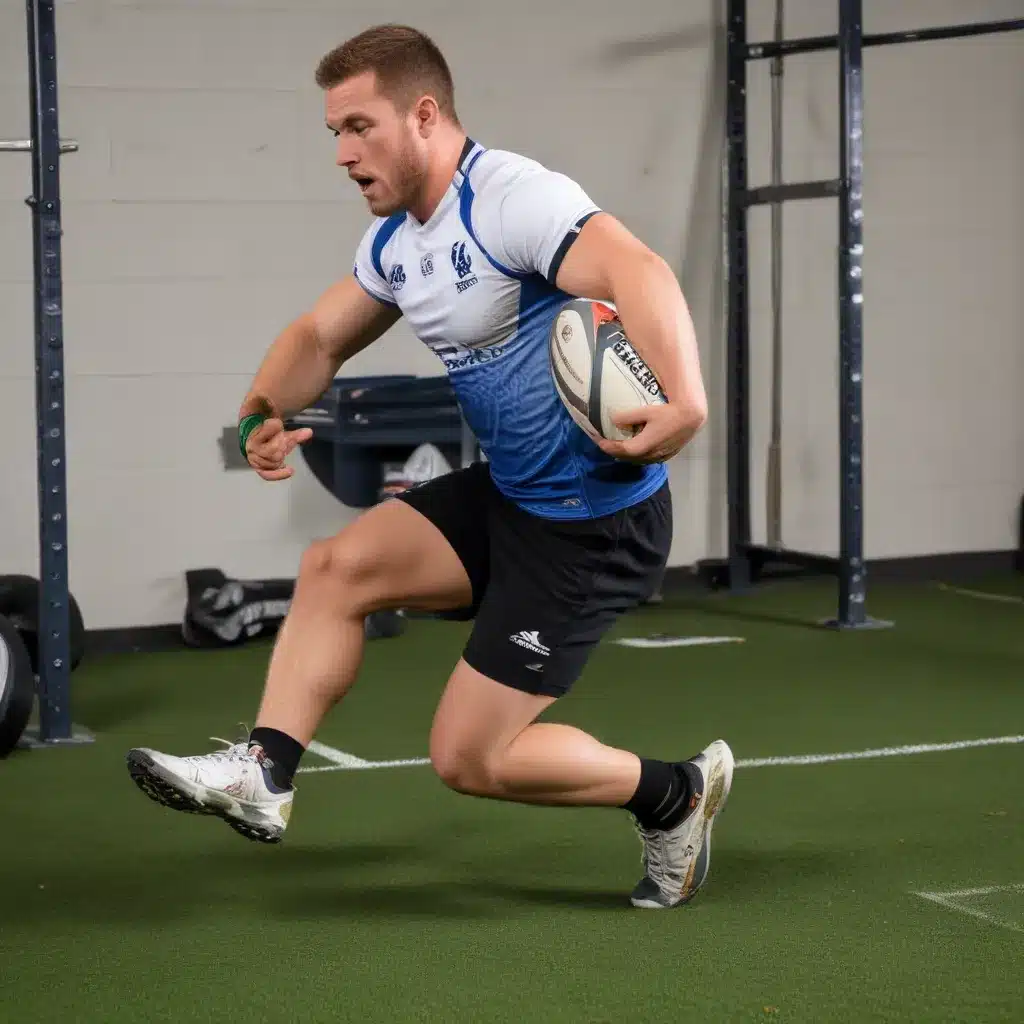
As a seasoned rugby professional, I’ve witnessed firsthand the importance of comprehensive physical preparation for our beloved sport. While the thrill and intensity of rugby are unparalleled, the physical demands also come with a heightened risk of injuries. That’s why I’m excited to share with you a detailed look at the critical role of mobility and stability exercises in rugby injury prevention.
Understanding the Demands of Rugby
Rugby is a dynamic, full-contact sport that places immense stress on the body. From explosive sprints and powerful collisions to tireless running and grueling tackles, our athletes are constantly pushing the limits of their physical capabilities. This constant exposure to high-impact forces and rapid changes of direction can take a toll, leading to a wide range of potential injuries, including muscle strains, ligament sprains, joint instability, and even concussions.
The Need for Balanced Preparation
To keep our players on the pitch and performing at their best, we must adopt a comprehensive approach to physical preparation. While strength and power training are undoubtedly crucial, it’s equally vital to address the often-overlooked aspects of mobility and stability. These foundational elements not only reduce the risk of injury but also enhance overall athletic performance.
Mastering Mobility for Rugby
Mobility, the ability to move freely through a full range of motion, is a cornerstone of injury prevention for rugby players. Limited mobility in key areas, such as the hips, shoulders, and spine, can lead to compensatory movements and increased strain on other joints and muscle groups. By incorporating targeted mobility exercises into our training regimen, we can improve joint function, enhance movement quality, and better prepare our players for the demands of the game.
Mobility Exercises for Rugby
Some of the most effective mobility exercises for rugby players include:
- Hip Mobilizations: Targeting the hip flexors, glutes, and hamstrings to improve range of motion and reduce the risk of lower body injuries.
- Shoulder Circles and Rotations: Enhancing shoulder mobility to prevent overuse injuries and improve upper body mechanics.
- Thoracic Spine Rotations: Increasing spinal mobility to maintain proper posture and reduce the risk of back pain and injuries.
- Ankle Dorsiflexion Stretches: Improving ankle mobility to enhance balance, agility, and force production during sprinting and change of direction.
By dedicating time to these mobility exercises, our players can enhance their movement patterns, reduce the likelihood of compensatory movements, and better withstand the rigors of the sport.
Developing Core Stability for Injury Prevention
Alongside mobility, the development of core stability is crucial for rugby injury prevention. The core, comprising the muscles of the abdominals, back, and hips, serves as the foundation for all movement and force transfer through the kinetic chain. A stable core not only enhances athletic performance but also provides the necessary support and control to prevent injuries, particularly in the lower extremities.
Stability Exercises for Rugby
Some of the most effective core stability exercises for rugby players include:
- Plank Variations: Traditional planks, side planks, and reverse planks to challenge the core musculature in different planes of motion.
- Bird Dog Exercises: Challenging the core’s ability to stabilize the spine during limb movements.
- Dead Bug Variations: Enhancing core control and coordination while challenging the core’s ability to resist movement.
- Pallof Press: Improving anti-rotation strength and stability of the core.
These exercises not only build core strength and endurance but also train the neuromuscular control and proprioception necessary for maintaining proper spinal alignment and joint positioning during the dynamic demands of rugby.
Integrating Mobility and Stability
While mobility and stability are often addressed separately, the most effective injury prevention programs incorporate a seamless integration of these two critical components. By pairing mobility drills with stability exercises, we can create a synergistic effect that optimizes overall movement quality, joint function, and neuromuscular control.
Sample Integrated Mobility and Stability Routine
Here’s an example of how you can incorporate both mobility and stability exercises into a comprehensive rugby injury prevention program:
- Mobility Warm-Up:
- Hip Circles
- Shoulder Rolls
- Thoracic Spine Rotations
-
Ankle Mobilizations
-
Stability Challenge:
- Plank Hold
- Side Plank (Left and Right)
- Bird Dog
-
Pallof Press
-
Integrated Movements:
- Single-Leg RDL with Reach
- Lateral Lunge with Overhead Reach
- Rotational Chop with Stability Ball
By blending these mobility and stability exercises, we can create a well-rounded program that addresses the diverse physical demands of rugby while reducing the risk of injuries.
Individualized Approach to Injury Prevention
It’s important to note that each rugby player is unique, with their own physical strengths, weaknesses, and injury history. As such, a one-size-fits-all approach to injury prevention may not be the most effective. By conducting thorough assessments and individualizing our exercise programming, we can better target each player’s specific needs and optimize their physical readiness for the demands of the sport.
The Aberdeenshire RFC Advantage
At Aberdeenshire RFC, we take a proactive approach to injury prevention, recognizing that a healthy and resilient team is the foundation for success on the pitch. By integrating the latest evidence-based practices and the expertise of our sports medicine team, we’ve developed a comprehensive injury prevention program that has helped our players excel, both in training and during matches.
Conclusion
In the fast-paced, physical world of rugby, the importance of mobility and stability exercises cannot be overstated. By prioritizing these critical aspects of physical preparation, we can empower our players to perform at their best, reduce the risk of injuries, and ensure they remain on the pitch, contributing to the team’s success. As a seasoned rugby professional, I encourage all players, coaches, and medical staff to embrace this holistic approach to injury prevention and unlock the true potential of our beloved sport.
